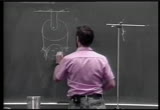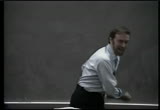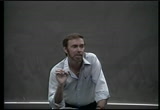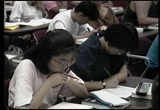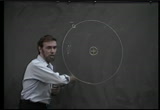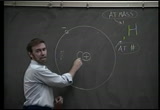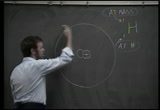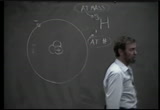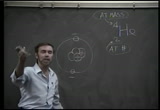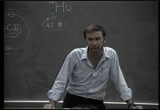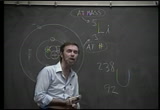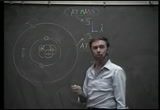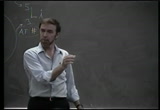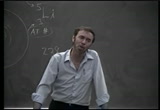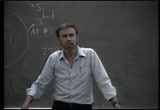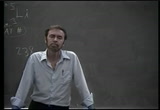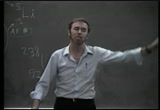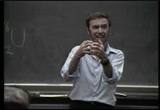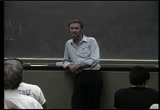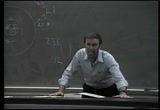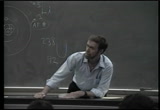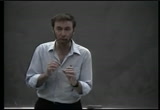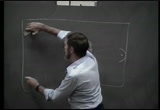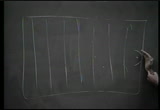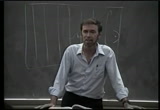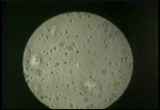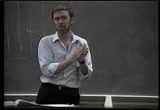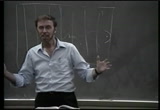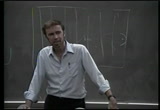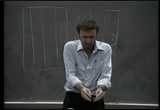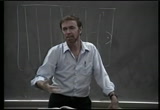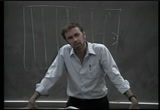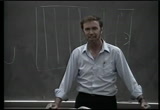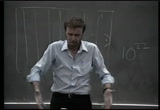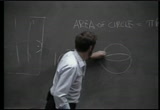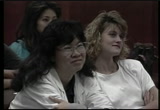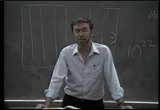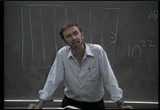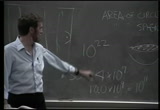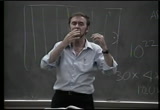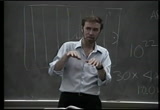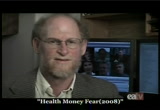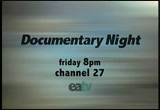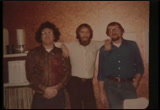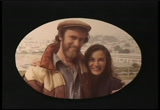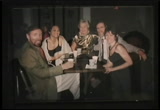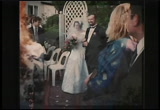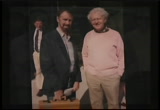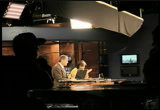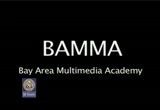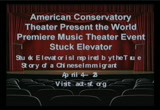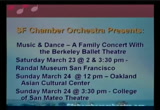tv Democracy Now LINKTV February 27, 2013 8:00am-9:00am PST
8:01 am
let's suppose, i take a boulder and i take a sledgehammer, and i, boom, i smash the boulder, boom, i smash the boulder down into what? rocks. then i take those rocks, boom, boom, i smash them down into... - stones. - stones. now, i take that sledgehammer, bam, bam. i smash those stones down into... gravel. come on, let's be a little imaginative here. and i take that gravel, unh, smash, smash, i break that gravel down into. - sand. - pebbles. sand. fine gravel. i take that fine gravel, i smash that down into, begin with an s, ends with and, try it. sand. now, i'd be taking that sand, honey. i take that sledgehammer and i smash that sand down into... - dust. - dust, powder. and i take that sledgehammer and whomp. i smash that dust down to... pebbles.
8:02 am
powder, fine dust. fine dust, all right, all right. all right, let's take that fine dust and i smash that down into, begin with c, r, y, s, t, a... crystals. and i take those crystals and i smash those down into... molecules, or begin with "a" and guess what we're gonna be talking about today? atoms, all right. now, i take those atoms and i smash those down. can i break the atom down to perhaps finer still. the answer, begin with a "y", end with a "p". - what is the answer? - yup. yup can do, okay. but i'll tell you what, when you get down to the atom, you're down to the element building block omatter. turns out the atom can be divided too. but if you take matter, like a hunk of gold, and break it down... you're finally down to one gold atom. take a bar of aluminum. break it down, you'll come to one atom that is aluminum, okay. it turns out atoms are the constituents of all matter.
8:03 am
take these atoms, gang them together and they form, begin with an m. molecules, okay, but atoms are what we're gonna talk about today. atoms are big or atoms are small? - very small. - small or small-small? - small-small. - small-small-small small. we'll talk about how big, how small atoms are. anyway, we have all the atoms arranged in our textbook. open to the front cover and you will see the periodic table, periodic chart of the elements. and this is the periodic chart, gang. you guys have gotta memorize that by next time. will you learn any physics at all if you do memorize that? no. you'll learn no physics, none. all you'll know is a lot of names and a lot of chart, okay? but what is this chart? this chart is an enormous detective story, put this together. what it does is it lists all the atoms by atomic number, starting off number one with hydrogen, jump over to the page, helium, then lithium, beryllium, boron, carbon,
8:04 am
what comes after carbon, gang? nitrogen. guess which is heavier, carbon or nitrogen? nitrogen. see, they keep getting heavier than ever, then oxygen, fluorine, neon and so forth. let's talk about those atoms. let's talk about some nomenclature for those atoms. consider hydrogen. hydrogen consists of a central nucleus and it turns out they put that plus sign there, because it's positively charged and around that nucleus, forms a negatively charged particle called an electron. we're gonna be talking more about this when we talk about electricity. this hydrogen has a chemical symbol h. guess why? hydrogen, hydrogen, yeah, okay? and then we have numbers like this.
8:05 am
these digits, this digit down here corresponds to the atomic number. that tells you the number of charges that are in the nucleus. that's one. and this digit corresponds to the atomic mass, over here atomic number and this one here atomic mass. an atomic mass refers to the number of particles in the nucleus. we call these particles nucleons, because sometimes you can have a neutral particle in there called a proton. and when you have that proton, this is still hydrogen, turns out that positive nucleus-- yes, lee? the neutral particle is a neutron. - what did i call it? - a proton. oh, did i call the neutral particle a proton? first time in my whole career... yeah, thanks, lee, thanks, lee. the neutral particles are neutron. guess why they call it neutron, gang?
8:06 am
neutral. come on, neutral, guess how much charge it has? none, okay? and it turns out this proton, which does have a positive charge, pulls on the electron and pulls it together. later on, we get into electricity. we're gonna learn the fundamental rule, and the fundamental rule just says this: unlike charges attract and like charges repel, and do you know how it comes? nobody knows. that's why we say it's fundamental. we'll talk about that when we get to electricity, but we can just think of this electron being attracted to that proton in a way similar, and in a way it's dissimilar too, but in a way similar to the way the earth is attracted to the sun. there's a gravitational attraction. here there's an electrical attraction. anyway, that's the schematic diagram of the hydrogen atom, but this atom's got an extra neutron, so it has a mass of two, atomic mass of two. this is heavy hydrogen. it's a little heavier. you see that? in fact, you can make water h2o
8:07 am
where the h is a double weight hydrogen and guess what we call the water? heavy water and you lift it up, you can feel it. it's heavier, okay? heavier water. this is called an isotope of hydrogen, called deuterium, duet, duo, okay? deuterium. you can also have another isotope of hydrogen which has an extra neutron and these are relatively rare, especially this one, it's called, tritium. trio, three people, trio, tritium, and so this would be isotope tritium of hydrogen, but see the one down there. that tells you that this nucleus has a positive charge of one and is capable of holding one electron in orbit to be stable. okay? now you know what happens if you add another proton? if you add another proton, now these two protons will pull this one tighter, because there's more force,
8:08 am
so what it does, pull that into a smaller orbit and furthermore hold an extra electron. this atom is physically smaller than the hydrogen. this atom with two protons is called... check your neighbor. atomic number two. - helium. - helium. that's helium, gang. now, gang, that's helium. in fact, we have up here, we have 1, 2, 3, 4, so it's helium 4 and what am i going to put for the atomic number? - 2. - 2. - helium, big or small? - small. small, very, very small, you put some helium in a balloon, and you're gonna save the balloon for next week when it's little kathy's birthday, huh? and next week comes and where's your helium balloon? is that on the ceiling anymore? it's on the floor. what happened to the helium? it got through the rubber, why? because it's a big humungous atom? no, because it's tiny. it's tiny, honey, here right through the little open spaces,
8:09 am
helium, the smallest atom that there is. i'll tell you another atom that's extremely small too, a little bit bigger than helium and that's fluorine. ever hear of the element fluorine? you be having fluorine in your toothpaste, gang, and guess what the fluorine does to your teeth? you know what the hardest part of your body is? the hardest? the enamel of your teeth. and guess what's small enough to get right in between the atoms and hold them together, strong, strong, begin with a "f", "l", end with "e", try it. - fluorine. - that's right, fluorine. so you get fluoride toothpaste, yeah? that's what it does. it gets right in there, gets them white and stronger. nice to have fluorine in toothpaste, ain't it, gang? gang, makes your teeth stronger, tiny atoms. if i put another proton in here, now i'll pull those things even tighter
8:10 am
and hold an extra electron and that one will be out here. and that atom now is called, guess what? lithium. now, it's lithium. lithium, 1, 2, 3, 4, 5, lithium 5 and 1, 2-- what's the atomic number, gang? - 3. - 3. and you keep going right up the periodic table and then you come way up to what is the heaviest element found in large proportions in nature and that happens to be uranium. and uranium has 92 protons and most uranium has 238 nucleons. if i asked you people hey, uranium, honey, 238 nucleons, how many of those nucleons are protons? and you gotta know. you would say... 92. what if i said how many nucleons in the nucleus? you would say? 238.
8:11 am
now here's where you need your calculator. how many of those nucleons are neutrons? and you would say... of course, you'd have to subtract, okay? you take this number, take away this number, and you guys say about 146, huh? you'd have 146 neutrons in that nucleus. so we have all the atoms, all the atoms which differ from one another principally by the number of protons in the nucleus, because anything that has three protons will hold three electrons, no matter how many extra neutrons you put in. and chemically, there's no difference between one isotope and another. chemically, it has to do with mostly this atom here, how that is compared to this, the configuration. and so if you have 92 naturally occurring atoms, then you have 92 different patterns of levels of electrons. and you have then 92 different atoms with different properties. that's when we have the elements, 92 through uranium.
8:12 am
got such thing? now, atoms: atoms are mostly empty... because this is grossly exaggerated. i've drawn these very, very big compared to what this is. a better thing would be like if i draw the nucleus here, then out across the street the electron would be. the atom is as empty of matter as the solar system is as empty of masses. you know, you got the sun and then you got mercury, venus, mars, keep going out. if you got out in outer space you see the solar system down there and you throw a dart and let's suppose that dart doesn't respond to gravity. and you throw a dart, and you wanna hit either the sun, the earth, venus, mars, pluto... if you wanna hit one, what's your chances, big or small? very small. small, honey, the solar system is mostly emptiness
8:13 am
and only occasionally would there be a direct hit even if you took showers and showers of particles which didn't interact gravitationally now. if they interact gravitationally, they'll come right up and hit you, but no gravity, they go right on by. well guess what, gang? there are neutral particles, thousands and thousands going right through my hand right now, as i talk to you. millions going right through my hand and these neutral particles are from the cosmos, most of them are neutrinos, little teeny, teeny particles with guess how much charge, called neutrino? none, okay? they're smaller than neutrons. and those neutrinos are flooding the universe. and these neutrinos are going right through, guess who? us. you guys, not me, but, no, all of us. these neutrinos are going right through and right out the other side without making a hit. you know why? do you ever get the feeling some days that,
8:14 am
you know, i just don't feel like i feel like i'm nothing? i'm nothing. i think i'm just nothing. do you ever get that feeling? guess what? i got news for you. you are nothing. compared to the something, there's more nothing, because the atoms that make you up are mostly-- talk about being spongy-- and we're all sponges, hon. and most--the little particles make up... take 133 million tons. that's several city blocks. scrunch all those atoms up, 133 million tons, scrunch them up until all these things here cave into one another. you got the size of a pea. so take the size of a pea and spread out a city block, that's how atoms are, most of them. so these things go right through our body without ever making a direct hit. you get, maybe, one direct hit per year on the average, one got me, okay? very, very seldom, okay? you know what? 1987, the supernova--
8:15 am
the supernova in the heavens-- and showered the whole universe with neutrinos. and neutrino flecks were so enormous that about one out of every 248 people, something like that, got one of those neutrinos, caught one and the rest went just right by through us, right through the other side, never, never making a direct hit. why? because the space between the little particles of the atom are enormous compared to the size of the particular nucleons or electrons. kinda neat, huh? so if there's a great big beam of neutrons coming right by, you just walk right through 'em, and they go right through the other side and they'll register just as much on here whether you're on the beam or not. do neutrons have more effects than neutrinos? it turns out-- i should say, a beam of neutrons, you would have more hits with a neutron than with a neutrino, but not too many more. you could walk through a neutron beam without harm, but i guess the counter reading over here would be a little less for neutrons,
8:16 am
but with neutrinos, you get the whole class standing here. hey, let me tell you what it is. it's a piece of lead, if you get a piece of lead, thick enough, then it will stop half the neutrinos. how thick you suppose is that gonna be about, this thick? this thick? this thick? this thick? as thick as the building? as thick as the world? as thick as like the diameter of the solar system? several light-years thick? and guess what the answer is, gang. six light years. eight solid light years. if you get eight years thick of lead, that's how far the sun will go in eight years, light will go in eight years. get that thickness. now put a beam of neutrinos through, half will come out the other side. so enormously, enormously transparent is even lead to such a thing as neutrinos, let alone us, huh? so mostly empty space, gang. hey, if we're empty space,
8:17 am
how about the chairs we're sitting on? begin with e, s. try it. empty space. how about your foot? your foot's mostly empty space. i remember one time i went to a party, and at this party a guy said this. i didn't know physics, honey. he said, you know what, if you keep kicking a wall, you know, the reason your foot doesn't go through is because the atoms are all... but you ever take a couple of combs and go click, click, click, click, click, click? and this dude said if you keep kicking a wall long enough, pretty soon, your foot's gonna get stuck, because the atoms of the foot will line up with the empty spaces of the wall and the feet can't get back out again. i was really impressed about that. wow, and i kind of thought about that. but then later i happened to think, wait a minute, wait a minute. now, if that's true how about when people are walking along the rocks? and there's never been a recorded case of someone...
8:18 am
sunk in the rock. so why is it that we don't sink down through the chairs we're sitting on? why do you go like this? why don't my hand go right on through? like in the science fiction stories. why? why does it stop? how can i make contact with the table, if this is mostly empty space and the table is mostly empty space? how many say that there is no explanation for that? there is an explanation, gang. you know what it is? oh, nobody be knowing. one be knowing. so you guys didn't have a chance to read the book this weekend. check the neighbor-- see if the neighbor knows. why is it you don't fall through your chair? anyone have any ideas? anyone? trish.
8:19 am
do the charges repel each other? yes, electrical charges, right on, wonderful. wonderful. remember, we talked about the atom here, these electrons repelling other electrons? any electrons on your seat? yes, any electrons on your seat? and when these electrons squished closer and closer, what do they do? begin with "r" end with "l". they repel and this is an electrical repulsion, my friend, between you and the chairs upon which you sit. let's put it this way. let's suppose this table-- pretend this table is a magnet. you guys know about magnets repelling. turn around, they attract, yeah. but you know magnets repel. you've all played with magnets. wow, how come that happened? there's no reason for that. come on, we'll talk about it later, yeah? but pretend that this table is a magnet and pretend that my shoe here is a magnet. and i have a force of repulsion, magnetic repulsion between my shoes and the table. can you picture in your mind's eye me walking across the table and not making contact
8:20 am
such that someone could come up and take a piece of paper and slip it right under my shoe? can you imagine that? can you? how many people say no, i can't imagine such a thing? you have to show me. show your hands. hey, but you know what, let me tell you, it turns out that's what happening anyway, but it's not magnetism. begin with "e". electrical. there's an electrical repulsion between you and the seat you sit on. and when you walk along the floor, there's an electrical repulsion that keeps you from oozing right down into the floor. these charges repel each other. in fact, at the atomic level we talk about touch. i'm touching the table, but get right down into the realm of the atoms, what's going on? where's the touch? there's an electron banging into an electron? it turns out they get closer and they get squashed. the electron, that atom gets squashed up a little bit,
8:21 am
and the atom in the hand gets squashed up and there's an enormous repulsion and you look how you, you make that whole thing vibrate. can you guys hear anything? listen. you know what you're doing? i made those sounds... and the atoms of the air... all the way to here. we'll be talking about sound later, huh? physics, okay. but you make vibrations, you make the atoms vibrate. that's what you're doing. you know the notion of touch is sort of like a lot different than the microscopic levels, at the atomic submicroscopic level, i should say. what do atoms look like? let's suppose you took a microscope, you go to the chemistry depart and say give me an atom. someone gives you an atom, you take some tweezers, you put it under the microscope and you look at it and you get, oh, what's it gonna look like? begin with "n" end with thing. nothing, right? now you take another microscope and put it on the top of that microscope, get 40 microscopes,
8:22 am
get on top of a ladder. every microscope--look down, ooh, what do you see? nothing. then someone says what's the atom look like? and you say, got no looks. atom got no looks. how can atom have no looks? it turn out that atom have no looks because it's smaller than the wavelength of light, that which you look at it with, huh? smaller than the wavelength of light. let me show you what i mean. let's suppose we have a tank, a tank of water here. and all i have here is i have like maybe a rock. there's a rock and a tank and over here i have some sort of detector and over here i take a meter stick and i go flip, flip, flip, flip, flip and i make waves and the waves travel. here's the waves like this. when the waves hit the rocks, can you see the rock disturbs the waves? with this detector, which consists of a little thing there with a ping-pong ball with a little arm that will float up and down,
8:23 am
will this detector detect the presence of that rock? will the waves come in differently to this detector if the rock weren't there? yes. can you kind of picture that in your mind, okay? it turns out that rock would disturb the waves. that's because the rock is bigger than the waves. here's the wavelength. look at the size of the rock. let's take the rock out of there. let's suppose now i have some blades of thin, thin grass sticking up there like this. these are very small compared to the wavelength of the waves. now, you... you generate your waves. what's this gonna get? is this gonna see the grass? somebody see the grass. those waves go right on by the grass. the little shoots of grass are smaller than the wavelengths. this time you're gonna pick it up. in the same way little atoms, of which you're made, are smaller than the wavelengths of light, and so light can't pick up the presence of an atom. light's too coarse. it turns out with a finer, finer wavelength.
8:24 am
you can get a wavelength that's very, very fine. very, very fine wave length, you can get an atom. and when i went to school, teacher types told me, we'll never see a photograph of an atom. look in your book and we got one. you guys see that? what page? whoever finds it first, get an "a." - 180. - 180. lee, you already got your "a". who else said 180? you get an "a" too. troy, at the end of the class, you could just miss all exams. not quite. page 180, gang, and there we have it right there. and that photograph, gang, made some history, because there are the individual atoms, the location of all those atoms very clearly shown. that's taken with an electron microscope. now, there's new kinds of microscopes that are called tunneling microscopes. and these microscopes give you a pattern that looks like this. we have a tunneling microscope right up in the physics department. now what that does, it takes a little needle
8:25 am
that scans back forth, back forth, back forth across the surface of metal and where the atoms are sticking up, makes a sorter path for a little electric current and the little electric current is measured because it goes from the needle to the material itself, and all these little bumps show you the position of an atom. so we're really coming a long way. we can actually see where atoms are now, because of what? the advances in technology. so now we know what atoms kind of look like, not so much what they look like but how they fix one to the other. so the guessing game that biologists used to have to do is greatly enhanced now. now they know. now we can do things with atoms. we can change the structure. we can change molecules. we can affect dna, splice genes, enormous things. lee. if all the parts of us that were made up of the atoms don't have an appearance, how come we have colors and appearances? although one atom doesn't have an appearance,
8:26 am
if i keep putting more and more, take one piece of grass, one piece of grass might not show anything here. now i keep putting more and more and more and more altogether, bunch them together, pretty soon this starts to show. so although one won't show you any appearance many, many will, because then they'll be on the order of the wavelength of light. and when you get larger than the wavelength of light, then light will show their presence. another thing, brownian motion. you've guys will be reading about what robert brown did back in 1830. he's looking in a microscope. and in the microscope, he sees little things jiggling. and at first he thought it was something in there alive, those little particles of soot and these little things are jiggling, jiggling, jiggling, and brown thought that maybe he saw atoms, but they weren't atoms. guess what they were, gang. little specks of dust banged into by, guess what. atoms. it's like this. see this styrofoam cup? you guys can all see this.
8:27 am
see this little bb right here, little bb in my hand. i got a whole bunch up in there, see them, i spill them on the table. see those little bbs, you guys can't see those bbs, 'cause you're too far away from them, okay? but can you picture this? can you picture the styrofoam cup on the table and all these bbs, all moving around haphazardly, chaotically and every once in a while the bbs and more bbs hit one side of the cup than the other, what will the cup do? wouldn't the cup start to jiggle? and you guys can see the cup, but you can't see what's making the cup jiggle. you know there's something smaller than you can see is making the cup jiggle. and that's what robert brown saw in his microscope. he saw little particles, big enough to see, jiggle. why jiggling? small enough, there could be more atoms on one side than the other. little bit more neck force on one side of the atom... that thing will jiggle around. so in response to the jiggling atoms, boom, the visible observation: microscopic particles moving, brownian motion. turned out albert einstein explained that and that was one of the first contributions of einstein to prove the existence of atoms.
8:28 am
he showed that the motion of those little particles of dust corresponded exactly to the motion of atoms at various temperatures. i asked you before, atoms big or small and you guys said... very small. small, right? okay, how small? small-small. small-small-small-small-small- small-small. how big is the sun? - big. - how big? very big. big-big-big-big-big-big. okay, let me tell you this, gang. the atom is small-small-small-small, as many times small than us as the sun and average-size stars are bigger than us. so do you want something for your poetry class? guess who stands between the atoms and the stars... in size? - us. - us. that's right, right in between. human beings are as many times bigger than the atom as the stars are many times bigger than us.
8:29 am
so it will kind of give you a little bit of feeling. here's another one. i like things like this. apple, any atoms in an apple? i'm sure there's a few, couple of dozen. come on, honey. this scads, right? about 10 to the 22, huh? many, many atoms in an apple, okay? how many apples would fit in the world? you take the world and made it all hollow and you stuck apples in there, lot of apples or little? about as many apples would fill up the whole world as, as many atoms fill up the apple, so atoms are really... small small-small. some people say, "no such thing as perpetual motion." someone else say, "that's not true." atoms are perpetually moving. they're moving all the time. - who's right? - both. are atoms in perpetual motion? any atoms in this room? - yeah. - [inhales, exhales] yes. i'll be glad there's atoms in this room, right? they make up the air in this room, right?
8:30 am
- are these air atoms moving? - yes. you come home from school. you're on one side of the house, mom's on the other side of the house. she opens up the oven. there's a pie in there. you got that almost right away. - how did you smell the pie? - atom. she opened the oven and what happened? atoms, these things migrating all the time. so atoms are constantly migrating from one place to the other. not only in air, in liquids, to some extent in solids. tiny, tiny extent in solids, but in liquids certainly. to give an example, go home. fill your bathtub high. take an eye dropper and take one drop of red ink, tiny drop. you see the redness in there, yeah? but you see it starts to spread out, right? that spreading out is evidenced that the atoms are doing what? they're moving, right? they're migrating. they go spread out, spread out. wait a little while, go out for a couple of hours, come on back, take an eye dropper, go in that bath,
8:31 am
now you can't see the red, can you? it's all diluted, huh? you can't see it. take your eye dropper. see if you can find a place in that bathtub that you can get a drop of water. bring that to the microscope and look at it and not have some pink in there, ink gonna do it, that's gonna spread out uniformly. you're not gonna get it. that ink will spread out everywhere. in the same way, if you drop that ink in the ocean of the earth, in the earth's ocean, it'd spread out too. when christopher columbus, coming across the atlantic ocean, okay, if he had taken a glass, like a 6-ounce glass that you drink water, yeah? he can reach down into the ocean and pick up that glass and then take that water and ththrow it back in, maybe tag it, maybe tag it, maybe make it all red or something, make it radioactive, somehow you can tell later on. today that glass of water all mixed up, long ago, yeah? go to the ocean, dip up, hold up to the light, it's somewhat like a little pink, because you know what?
8:32 am
some of the atoms in christopher columbus's glass are in that glass of water. there are so many atoms. oh, i'll just throw a little ddt in here. it'll be okay. what do the penguins say about that way, way, way in the bottom of the run? do they get the ddt? they get the ddt, honey. a visible amount of ddt is an enormous number of atoms. so it'll spread out. so you put a little pollution on the air, what happens? takes about six years for that to spread out. i want everyone to do something today. i want you all to do this. take a breath of air. no, you don't have to but go ahead. we take a breath of air, right? did it feel a little musty? do you know what you guys just did? you just breathed in billions and billions of atoms
8:33 am
that once were exhaled by leonardo da vinci, the italian type. take another breath. that one was einstein. einstein, okay. shakespeare. hey, but do this, that one on shakespeare, go again. now did the same atoms come out that went in? no, what come out are different than the ones that went in. why clorets, right? so every time we taka breath, you're breathing other people, and then when you breathe out, you're breathing out some of those people and you're also breathing the most important person in the whole universe and who's that? yourself. so some of your self is all around the atmosphere. you guys know that? now, let's do a little calculation. how many atoms are in your lungs at any moment with a normal-size breath?
8:34 am
it turns out to be about 10 to the 22 atoms. that's one followed by 22 zeros, 10 to the 22 atoms in your lungs at any moment. get this, if you consider how many breathfuls of air are in the whole world, guess what the number turns out to be? 10 to the 22. 10 to the 22, so you know what that means, gang? there are as many breaths of air in the world as there are atoms in your lungs at any moment. how do we know how many breaths of air in the world? well, what you do is you calculate the area of the world. you guys know what the area of a ball the area of a sphere? anyone happen to know what the area of a ball is or square or any other shape? anyone happen to know what the area of a circle is? take an orange and cut it in half and you make a wet mark, right? that's a circle. what's the area of a circle?
8:35 am
pi x r-squared, the area of a circle. now let me tell you something you'll always remember. if you know the area of a circle pi x r-squared, you'll always remember what the area of a sphere is and the area of sphere is simply this. take an orange, cut it in half, how many times can you take that wet orange and wet the outside of another that's the same size. take a guess. could you wet the other one at least twice? would the area of a ball be twice that? see, take an orange. cut it in half. now that's a circle, right? and that area is pi x r-squared. what's the area, see this part here will wet this part here, right, that part will be wet and you wet it, it turns out you could wet that four times.
8:36 am
so that means the area of a sphere equals 4 circles, 4 pi x r-squared. it's one way to look at it. anyway, one can calculate the area of the world because we know what the radius of the world is. we can get the area. we know how deep the atmosphere is. take the area, multiply by the depth of the atmosphere and it's an average depth and you get a number. you get a volume and that volume is 10 to the 22 times as big as the volume in your lungs. that's wild, because you know what that means, gang? i don't know if you guys can put this all together, but everyone do this... i go like this... now that particular breath, that breath, that breath if you exhaled, atoms, right? wait six years, go to the other side of the world, get with your friends and go...
8:37 am
guess what you got in that one breath? how many atoms in that breath you just guys let go, six years in the next one? begin with a "w". one, that's right, one. so you, 10 to 22 of your atoms and they're all gonna spread out out to 10 to 22 liters, really and every liter is gonna have one atom. so anywhere you go you pick up that one. so any one person's one breath, you guys got atoms in that breath right now. now, usually people take more than one breath. leonardo da vinci, honey, old dude, took many, many breaths, and all his breaths you have hundreds of billions of atoms of leonardo da vinci's breath in you or any other person who lived for a long time. so you're made up of the atoms of everyone
8:38 am
who has ever breathed before you. how many people in the world today? about 4.5 billion? that's 4.5 times 10 to the 9. how many people compared to how many atoms in your lungs, which is bigger? you know there's a lot of people. people are 10 to the 9, atoms are 10 to the 22. how many people have been on the planet since the beginning? nobody knows, but arthur c. clarke has made an estimation, and he said it this way. behind every human being stands 30 ghosts, that 1/30 of all human race from way back is walking the earth today.
8:39 am
that number's changing quickly. let's say one trillionth, so that means there were 30 more people on the earth from time zero than there are now. now there's about 4 billion. and there's 30 times that number for the total number of people that ever lived. 3 x 4 is 12, call this 100, that's like 10 to the 11, 10 to the 11 is 100 billion. so 100 billion people in the world. but the number of atoms in your lungs, 10 to the 22, what's that, billion, billion... 10,000 billion, billion atoms in your lungs. many, many, many more atoms in your lungs than people that ever lived,
8:40 am
so you can rest assured that inside your lungs or inside your body at any moment are atoms from every human being who ever lived. you know how the buddhists say things like we are all one. we are all one. what do the physic-ers think about statements like that? the hardcore physic-ers, what do they say? it's true. it's true. little kids know that we're all, if they're taking a science class, learn that we're all made of the same kind of atoms. you know, there's like 92 different kinds, right? no, but wait a minute. go a little further. we're not made of the same kind of atoms. honey, we're made of the exa same atoms over and over again. okay, trish, i see you scratching your forehead there. when you scratch your forehead, a little forehead atom go out, right? lee, you just went okay, you just got a little bit... now that will become part of your ear. so part of your eatoday will be part of trish's forehead yesterday. and, you know, what we're doing, gang? we are literally breathing each other, because every time we breathe in--
8:41 am
sometimes the atom gets stuck, yeah? they get stuck and they become you. so you're really part of everyone else. hey, someday, someday you get down and out. some day you get down and out. you may have one of those days when you don't feel like you're ever gonna amount to a darn thing? i tell you what you do. on those days you get down and out, grab onto yourself, grab on. say i might feel down, i might have the blues today but this, this that i'm holding onto, this is me, and this that i call me, that's atoms. and these atoms i'm holding on will live inside the bodies of everyone who's ever gonna be on this earth. 'cause that's what happens to you. your fate is to end up everyone else, true, false, or maybe? think about that. catch you later.
8:43 am
8:44 am
and i, like everyone, have had many, many influences. and i just wanna cite, oh, very few, just three or four here. i know when i was in high school, there was a counselor, edward gibbs, high school counselor, and he advised me to not take any academic subjects because i wouldn't need to, because he was aware of my talent for art. i was the guy that would paint the posters for the dances, make the cartoons in the yearbook and that kind of thing. and so he said i wouldn't have to take academic courses, so i took his advice and i didn't. and so in high school, i took no physics, no science. i did mathematics for boys in the freshman year, and there was a general science course and i thought it was wonderful. but that's about it for that. and another one of my influences was kenny isaacs. kenny isaacs was a local boxing hero. and i was one of these kids that was getting beat up all the time
8:45 am
by bullies. i wasn't much of a physical specimen. and kenny isaacs was-- he was the fighter of fighters. everyone admired that guy. i remember going to lynn and watching him fight sometimes. i was about maybe 14 years old, 13, 14, and saying, "wow, this guy is so great." i wish i could be there in his corner, be sort of the kid that comes up with the water bucket, you know, and helps him. this is a gladiator, no one beat him up. but anyway, kenny isaacs was a big influence because, to make a long story short, three years later, kenny isaacs was in my corner. and a fellow lived next door to me, eddie mccarthy, who was a professional fighter, 135-pound, lightweight, very good guy. and he took me under his wing. but then he went off to the korean war. just before he did that, he turned me over to a local boxing hero, kenny isaacs. and he told kenny, "kenny, take young paul here under your wing. he's my protege." kenny did that. and i was gonna retire as soon as i won the flyweight championship of north america,
8:46 am
but i never got that far. i got up to the silver medal for the aau in new england at the age of 17. and that was about it. after that, in the follow-up fight, getting ready for the nationals, i got knocked out, the end of that career. another big influence on my life was burl grey, a sign painter that i met back in the late fifties. burl was painting in miami and i was assigned to paint with him. no one else would paint with him because there was a rumor going around about him that he was, yeah, one of them. he was accused of being, and i found out for myself that old burl was an intellectual. and intellectuals didn't cut it at the sign painting circuit. anyway, burl grey influenced me a lot. he's the one that lit my fire to get into science. and many of the ideas i had about things were-- burl sort of demolished. he was a very philosophical type and he was a nontheist.
8:47 am
and he, you know, convinced me that things were so much simpler if you took a more scientific view of the world and there's so much that we're taught to believe or that we come to believe that simply isn't true. and how does one determine what's true or not? do you find out when you're an old person ready to die that everything you've been doing is just junk? well, you know, we each need a knowledge filter, sort of, to tell the difference between what's true and what isn't true. and burl convinced me that the best knowledge filter ever invented is science. and so i got into science. i went to school. i went to college, lowell tech in massachusetts, after doing a year of prep school 'cause i didn't take the recommended courses in high school, i had to do this, you know, make up for deficiencies. so burl was a big influence of mine. and then i went through it and i got a physics degree. and while getting that physics degree, it was very, very difficult for me.
8:48 am
but there was a book i read when i was in graduate school in the summertime. it was wonderful. it was a book called "basic physics" by ken ford. and ken ford became my mentor and another big influence on me. and ken ford's book, awesome. he told it like it is. ken ford is a giant himself. he doesn't have a nobel prize but his friends do. he's one of those type guys. he was the exec officer of the american institute of physics. i'm proud to say now, i'm very proud of him to have him for a personal friend. so he was a great influence on me. and now i find myself, my greatest satisfaction is to realize that i myself am an influence for other people. i'm sort of a kenny isaacs or a burl grey or a ken ford to many students. and this many is with a capital m, thanks to the efforts of my friend marshall alenstein who has put together these videotapes a these dvds
8:49 am
that spread my lectures from the classroom into the classrooms of many people. and so, it's wonderful being that role model for other teachers and students. and whatever i can do to be a burl grey to other people, to let them see that perhaps a very good foundation for, hey, what's going on in the world, certainly, is science. so let's hear it for physics. physics first, it's a wonderful way to look at the world. it makes sense out of what ordinarily might be just too cplex to understand. physics, i love it. i hope you do too.
112 Views
Uploaded by TV Archive on

 Live Music Archive
Live Music Archive Librivox Free Audio
Librivox Free Audio Metropolitan Museum
Metropolitan Museum Cleveland Museum of Art
Cleveland Museum of Art Internet Arcade
Internet Arcade Console Living Room
Console Living Room Open Library
Open Library American Libraries
American Libraries TV News
TV News Understanding 9/11
Understanding 9/11
